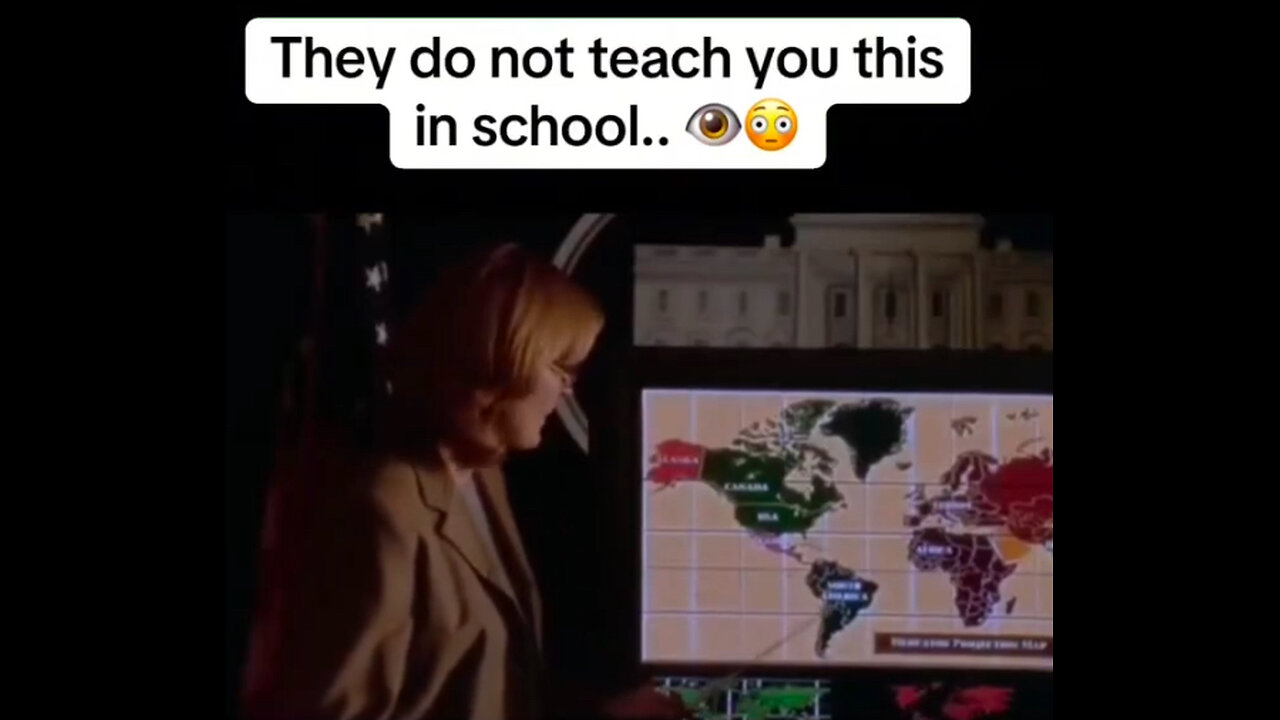Premium Only Content

The Map Conspiracy: Redrawing the World to Control Our Perception
Introduction: A World Misdirected
Maps are more than tools for navigation—they are powerful instruments that shape how we perceive the world. The commonly used Mercator projection, designed in 1569, has been criticized for distorting the relative sizes and positions of continents. But what if this distortion was not accidental or merely a byproduct of a practical design for navigation?
This conspiracy theory posits that the way maps have been drawn and taught for centuries is a deliberate manipulation, designed to reinforce geopolitical power structures and control how humanity sees itself. The map you’ve lived with your whole life may not only be wrong—it may be a lie.
The Mercator Projection: The Map That Shapes the World
1. Distorted Land Masses
• The Mercator projection stretches regions near the poles, making Greenland appear comparable in size to Africa when, in reality, Africa is 14 times larger.
• Europe and North America are enlarged, while continents like Africa and South America are shrunk, creating an illusion of dominance for Western nations.
2. Geopolitical Implications
• By enlarging Europe and North America, the Mercator projection visually asserts their importance and power.
• Conversely, by shrinking the Global South, the map reinforces a subconscious narrative of insignificance for these regions.
3. The Central Position of Europe
• The placement of Europe at the center of the map reflects the Eurocentric worldview that dominated the colonial and imperialist eras.
• This centrality is not geographically accurate but serves to position Europe as the “heart” of civilization.
The Peters Projection: A Threat to the Status Quo
1. Revealing the Truth
• The Peters projection, introduced in the 1970s, corrects the size distortions of the Mercator map. It shows Africa and South America in their true proportions, dwarfing Europe and North America.
• This map challenges the established hierarchy by visually equalizing all nations and continents.
2. Resistance to Adoption
• Despite its accuracy, the Peters projection has faced significant resistance from educators, governments, and institutions, raising questions about why the Mercator map persists.
3. The Question of Placement
• The Peters projection also raises the issue of geographic placement. Why does Europe dominate the center of the map, and why are traditional “north-south” orientations assumed to be correct?
• Some alternative projections suggest a reorientation of the world map, flipping it upside down or placing the Southern Hemisphere at the top.
The Conspiracy: Maps as Tools of Control
1. Manipulating Perception
• The distorted sizes and placements on traditional maps reinforce a power dynamic that elevates certain nations while diminishing others.
• This manipulation fosters a subconscious bias, making Western nations appear larger, more central, and more significant than they actually are.
2. Colonial and Imperialist Roots
• During the colonial era, maps were tools of conquest and control. By misrepresenting territories, colonizers could assert dominance and downplay the significance of the lands they exploited.
• The persistence of the Mercator projection reflects lingering colonial mindsets that prioritize Western narratives over global equality.
3. A Deliberate Omission of Alternatives
• Alternative projections like the Peters map challenge the status quo, but their widespread adoption has been stymied by institutional inertia and active resistance.
• Why? Because adopting a more accurate map would force societies to confront the distortions they’ve accepted as truth for centuries.
What Else Are We Getting Wrong?
1. The North-South Orientation
• The convention of placing the Northern Hemisphere at the top of the map reinforces the idea of northern dominance.
• There is no inherent reason for this orientation; maps could just as easily place the Southern Hemisphere at the top, radically altering perceptions of importance and centrality.
2. The Geographic Center
• Why is Europe the “center” of the map? Geographically, there is no justification for this placement.
• Maps centered on Africa, South America, or even the Pacific Ocean would offer a more balanced view of the world.
3. Military and Strategic Implications
• Some theorists suggest that distorted maps are used to mislead populations about the true strategic value of certain regions. For example, shrinking the size of Africa downplays its vast resources and strategic importance.
Why This Matters: The Psychological Power of Maps
1. Visual Narratives Shape Reality
• Maps are one of the first tools we encounter that shape our understanding of the world. The distorted narratives they present influence how we see ourselves and others.
• By misrepresenting the Global South, traditional maps contribute to a perception of inequality and underdevelopment.
2. Perception and Power
• Nations that appear larger and more central are subconsciously perceived as more powerful, while smaller, peripheral nations are seen as less significant.
• This visual hierarchy reinforces real-world power dynamics, perpetuating inequality on a global scale.
3. The Fight for Representation
• Correcting the distortions on maps is not just a technical issue—it’s a fight for equitable representation. A more accurate map could shift how nations and regions perceive themselves and each other.
Conclusion: Redrawing the World
The map you’ve been living with is more than a tool for navigation—it’s a carefully constructed narrative that serves specific power structures. By distorting sizes, centralizing Europe, and maintaining a north-up orientation, traditional maps reinforce a worldview that prioritizes Western dominance.
The adoption of alternative maps like the Peters projection is not just about accuracy; it’s about challenging the systems that have used maps as tools of control. A world with accurate, equitable maps is one step closer to a world where all nations and peoples are seen as equal.
The question remains: if the maps are wrong, what else about our understanding of the world is a carefully crafted illusion?
-
 24:29
24:29
FragmentsOfTruth
4 days agoModern Relationships Are Collapsing – But Who’s to Blame?
2982 -
 47:39
47:39
Michael Franzese
4 hours agoJewelry King Trax NYC EXPOSES How the Powerful Steal from You
45.3K7 -
 LIVE
LIVE
Slightly Offensive
3 hours ago $2.86 earnedCandace REDPILLS the Masses in BOMBSHELL Theo Von Interview | Guest: Shane Cashman
1,067 watching -
 LIVE
LIVE
megimu32
3 hours agoON THE SUBJECT: IRL Streamers Attacked & Nostalgic Animal Movies That Made Us Cry
354 watching -
 1:00:54
1:00:54
The Tom Renz Show
6 hours agoMore Epstein/FBI, a Scary Trade War, & the Dem Echo Chamber
7.49K -
 40:43
40:43
Kimberly Guilfoyle
7 hours agoDems Double Down on Delusion-Why? Live with Tony Kinnett & Bo French | Ep.202
61.7K31 -
 1:28:42
1:28:42
Redacted News
5 hours agoBREAKING! SOMETHING BIG IS HAPPENING IN EUROPE ALL OUT WAR IS COMING AGAINST RUSSIA, TRUMP FURIOUS
121K266 -
 47:50
47:50
Candace Show Podcast
6 hours agoBREAKING: Judge Makes Statement Regarding Taylor Swift's Text Messages. | Candace Ep 155
94.3K105 -
 DVR
DVR
Josh Pate's College Football Show
3 hours ago $0.29 earnedCFB’s Most Hated Teams | FSU & Clemson Future | Big Ten Win Totals | Star Rankings Overrated?
5.76K -
 1:33:47
1:33:47
CatfishedOnline
4 hours agoGoing Live With Robert - Weekly Recap
27.8K